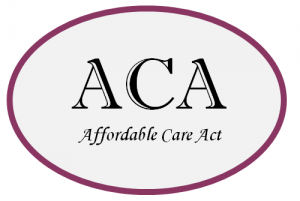Employers: Three Health Care / ACA Compliance Q&A
 Here are 3 great Q&A’s for ACA compliance
Here are 3 great Q&A’s for ACA compliance
We reimburse our management employees for their individual health insurance premiums via their paychecks. We add it on to their net payroll. Should we be taxing them on this amount or do we need to report it and they pay taxes on it when they file their personal tax return?
An employer is permitted to provide a stipend to employees to help them pay for an individual health plan. This holds true regardless of the employer’s size and regardless of where the employee opts to purchase the individual plan (through a broker, through the Marketplace Exchanges, etc.). It’s important to note that a larger company (50+) employees could be subject to play or pay penalties beginning in the next couple of years if it fails to meet its obligations under the employer mandate. Employer mandate penalties will not apply to companies with less than 50 employees.
Where the employer could get into some IRS trouble is if the company attempts to provide pre-tax dollars through a Section 125 plan to employees for this purpose. So if an employer adds the health care stipend to the employee’s net amount without taxing it, then the employer has entered into a health care arrangement, also known as an employer payment plan. There are very specific rules involved in these arrangements, and often the individual health plans that employees purchase do not meet the requirements of these arrangements. The company could be subject to IRS excise taxes if it provides pre-tax dollars to employees for them to purchase individual health plans. Click here to read more.
 Some of my employees are part-time. How do I calculate the number of FTE for ACA to determine if I have to comply with the regulations for a 100 and above employer?
Some of my employees are part-time. How do I calculate the number of FTE for ACA to determine if I have to comply with the regulations for a 100 and above employer?
The “Employer Mandate” (effective January 1, 2016 for employers with 50 or more employees and January 1, 2015 for employers with 100 or more employees) is the provision in the Patient Protection and Affordable Care Act (PPACA) that requires “large” employers to provide health insurance to their full-time employees (those working 30 or more hours per week) or face a penalty.
A “large” employer is defined as one that has an average of 50 or more “full time equivalent” employees on business days during the preceding calendar year. To calculate whether your organization is covered by the employer mandate, you must look at the twelve months of the preceding calendar year to determine the average number of full-time equivalents you employed over those months. Part time employees are considered fractions of full time employees for the purpose of the employer mandate calculation. Lastly, seasonal workers are excluded unless they work for the employer for more than 120 days.
The formula for determining full time equivalent employees is:
Part-time Employee Equivalents (Total Monthly Part-Time Hours/120) + Full-time Employees (30 hours/week or more) – Owners (Sole proprietors, Partners in a Partnership, Members of LLCs Taxed as a Partnership, and Shareholders who own two percent or more in an S Corporation) = Full Time Equivalent Employees.
Please give me a summary of the guidelines for the “affordability” provisions of health care reform that we discussed today? I would like more information regarding the 9.5% rule.
The “affordable rate” standard for the Affordable Care Act (ACA) is typically met as long as the employee does not have to contribute more than 9.5% of household income for single coverage for a bronze metal or higher plan. However, there are many safe harbors in place to allow employers to more easily meet this requirement.
There are three main safe harbors. Click here to read more.
